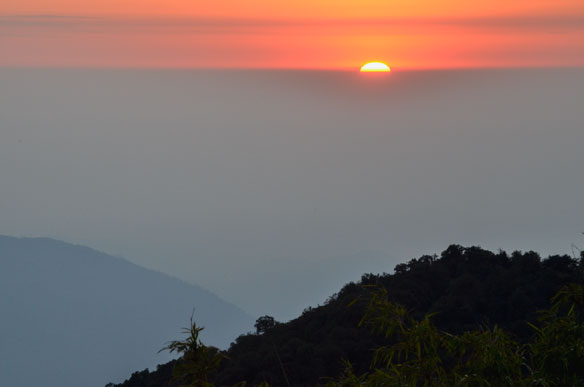
Climbers reach inspiring heights at HMI
In search of adventure
TED DAVIS
Pictured above: Sunrise from Tiger Hill in Darjeeling is greeted by crowds every morning.
Would-be mountaineers don’t have to look hard for inspiration when visiting Darjeeling, India.
This city near India’s northern border sits at 2,000-plus metres among the foothills and steeply creased valleys near the Himalayan range.
On a sunny and blue day, the massive bulk of Kanchenjunga can be clearly seen from high viewpoints in the city. Climbers seeking inspiration know they are looking at the third highest mountain in the world.
So, it is only fitting that Darjeeling would be the location of the Himalayan Mountaineering Institute (HMI), which has established itself as a famous training school for climbers over six decades. Darjeeling was chosen as the location, given its status as the hometown of Tenzing Norgay, the famous sherpa who accompanied Edmund Hillary on his first-ever ascent of Mt. Everest.
The HMI is located on the bluffs overlooking the city and features a museum that documents the history of mountaineering in the Himalayas. Visitors who aren’t necessarily climbers can get some insight to the logistics and demands of scaling these peaks, and learn about the historic high points of Himalayan mountaineering.
There are, for instance, displays that illustrate the evolution of mountaineering equipment, and others that describe the chronology of expeditions to scale Everest.
There is also an excellent diorama that graphically illustrates the length and breadth of the Himalayas and the locations of all the most famous peaks – Annapurna, K2, Everest, Kanchenjunga, etc. It gives a good sense of scale to the wall of mountains that separates the Indian subcontinent from China and central Asia.
But those with a more committed mountain encounter in mind will want to sign up for one of the available mountaineering courses that are available. They can, for instance, opt for a short course (three to eight days) that focuses on Sport Climbing or Rock Climbing; or an Adventure course that runs from 10 to 16 days. Longer courses run from 15 to 28 days.
A 28-day Basic Mountaineering course is the most popular and is offered from March to December, with a break during the winter months. Basic Mountaineering courses are available for men-only, women-only or combined, and the age range stipulated is 17 to 40. Students can expect to spend about US$800, and that includes basic housing, meals, equipment and transport.
A maximum age of 40 is indicated for most of the courses, with options available for those as young as 10, or for teens.
Each applicant gets a physical fitness test to assess their mental and physical fitness for training at high altitude areas. A minimum one month of regular exercise including one hour of running per day is essential to pass the fitness test.
The test includes 25 km of trekking up and down inclines, with a 15 kg load over a limited set time. Gulp!

